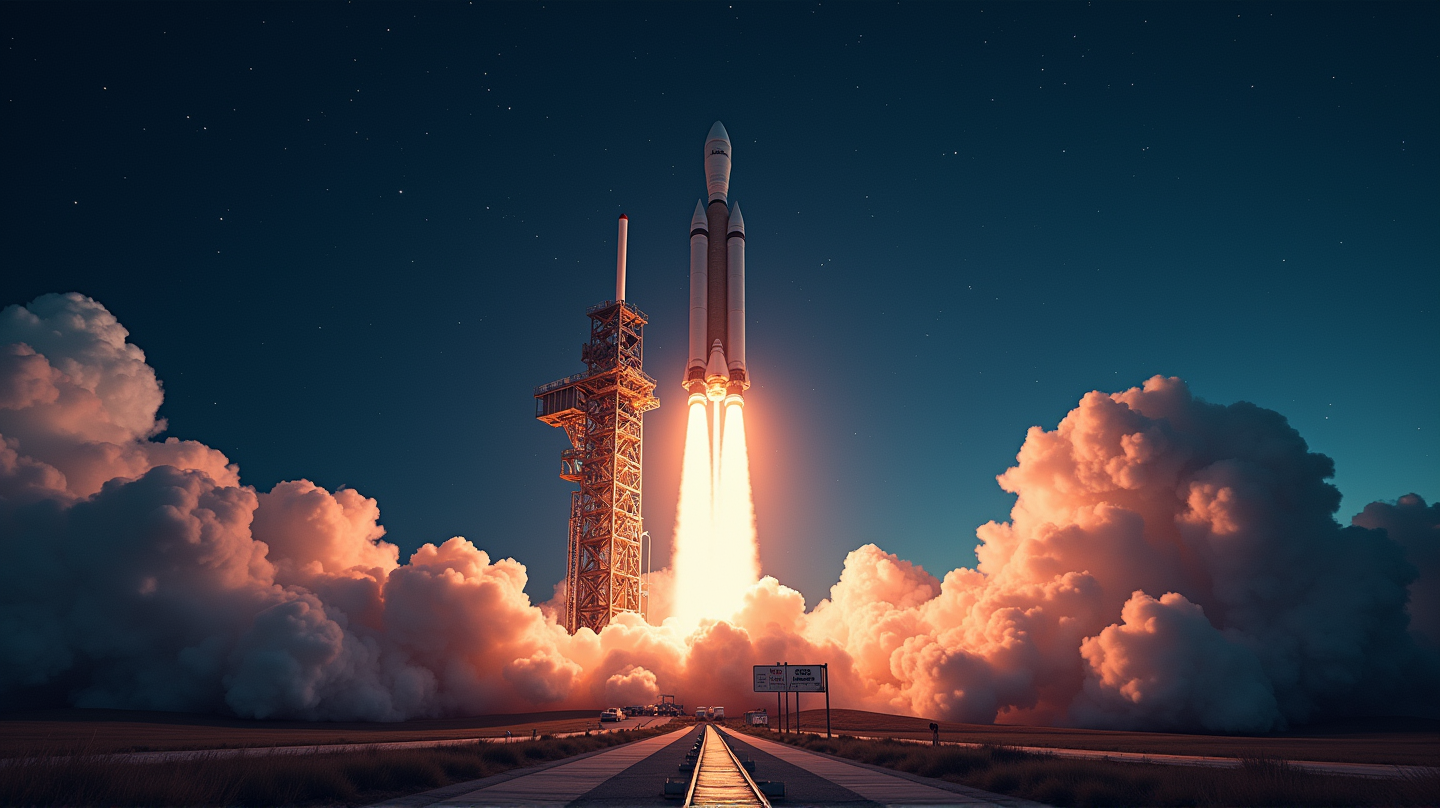SpaceX Achieves Unprecedented Success with Starship Flight 12
In a dazzling feat, SpaceX's Starship Flight 12 marks a historic leap in space exploration, reinforcing their dominance in the cosmic race.

The early hours of October 14th were nothing short of electrifying at the Boca Chica launch pad in Texas. As the clock struck 1:15 a.m. French time, the most powerful rocket ever built by humankind, the Starship, successfully ascended, heralding a new era of space tourism. This remarkable mission, SpaceX’s 11th Starship flight, has pivoted the company closer to its celestial ambitions.
A Night to Remember
With the eyes of the space community locked on this event, SpaceX’s audacious attempt paved the way for future innovations. Not just another test run, the significance of the Starship v2’s final flight cannot be understated, as it marked the conclusion of this generation. As stated in LaQuotidienne, this particular flight will pave the path for the forthcoming v3, promising increased size, power, and the capability to enter Earth’s orbit, enabling groundbreaking Starlink deployments.
Overcoming the Odds
SpaceX had to navigate through rocky waters; previous flights faced several technical hurdles, with flights 7, 8, and 9 revealing unforeseen glitches. However, Elon Musk, undeterred by setbacks, pushed forward, refusing to delay the timeline despite the complex tech challenges, even while racing against China’s robust lunar ambitions. Complacency is not in Musk’s playbook - through “controlled self-sabotage,” the mission exposed vulnerable systems to extreme conditions to map critical failure points.
A Glimpse into SpaceX’s Bold Strategy
SpaceX’s daring maneuvers with Flight 12 went beyond the ordinary. They recycled a booster from March’s flight 8, demonstrated eight Starlink simulators’ deployment, and reignited a Raptor engine amid the void of space. Musk and team also strategized to test the safety thresholds by adjusting the engine functions, showcasing reliability against potential mid-mission failures by using five engines instead of the typical three for the landing phase.
The most striking trial, however, came in the form of intentional exposure to severe heat – temperatures climbing over 1,400°C – to better understand the heat shield dynamics. This experiment wasn’t a misstep but a calculated risk aligning with Musk’s unconventional yet effective testing philosophy.
Celebrations and Forward Momentum
Brimming with pride post-mission, Elon Musk declared the mission an excellent execution, lauding his teams’ unyielding efforts. NASA’s acting administrator, Sean Duffy, echoed Musk’s optimism, viewing these achievements as essential steps for upcoming Artemis missions, aiming at the Moon’s south pole. The message was clear: every Starship flight strengthens the mission’s foundation, races against rivals such as China, and positions America at the forefront of space exploration.
Continuing the momentum, SpaceX’s forthcoming Starship v3 aims to break new grounds with historic space feats like orbital refueling maneuvers, setting the stage for more intricate space adventures.
The race toward the final frontier accelerates, and SpaceX’s triumph with Starship Flight 12 stands as a testament to their relentless pursuit of the stars.

